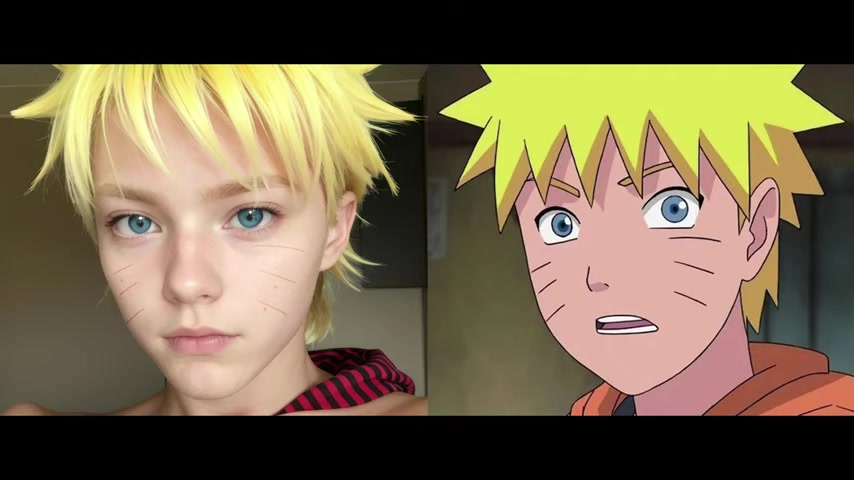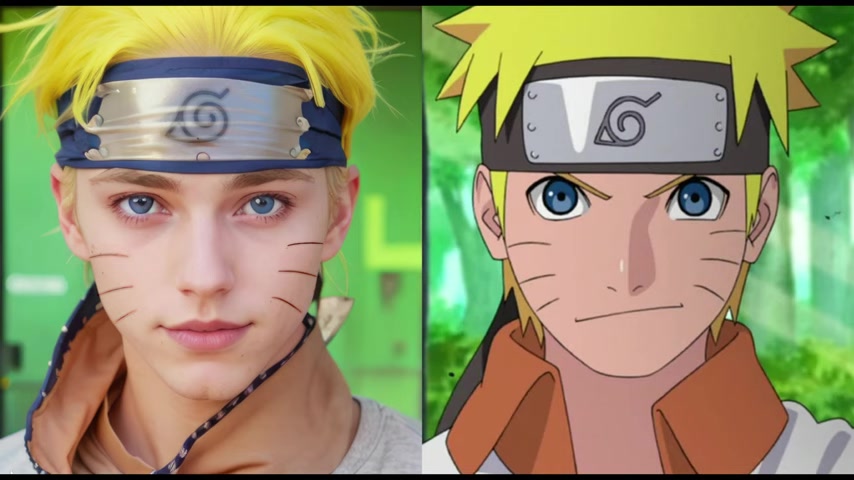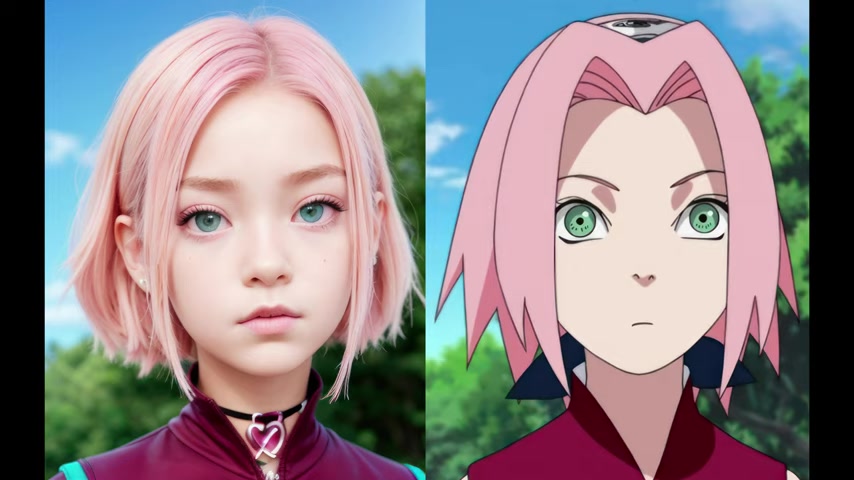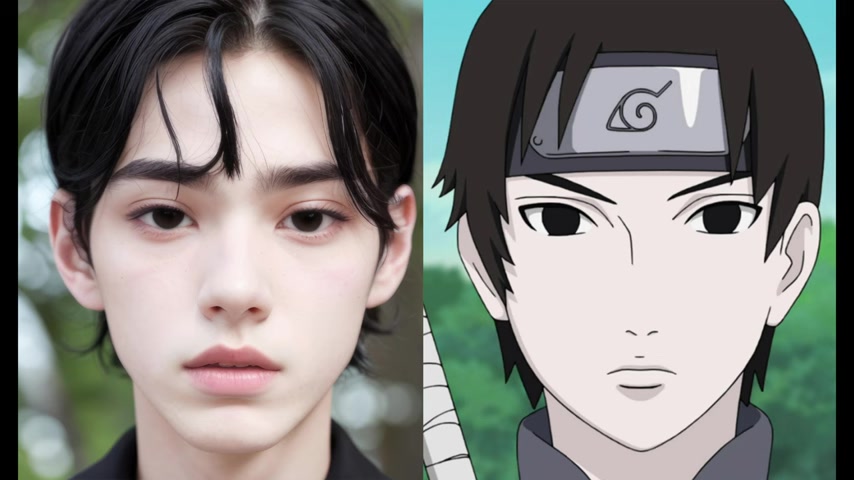
Key Points
The fusion of real-world aesthetics with anime character design.
Stunning makeup transformations to replicate anime features.
Detailed costume construction showcasing incredible craftsmanship.
The dedication and artistry required for realistic cosplay.
Examples of realistic cosplay from Naruto characters.
The Allure of Realistic Anime Cosplay
What is Realistic Anime Cosplay?
Realistic anime cosplay takes the art of costume play to a new level, aiming to bridge the gap between the animated world and reality. It’s more than just wearing a costume; it’s about embodying the essence of a character, replicating their features, and conveying their personality through meticulous attention to detail. This style often involves advanced makeup techniques, custom-designed costumes, and a deep understanding of the character’s traits. The goal is to create a believable, real-world representation of a fictional character.
Realistic anime cosplay presents a unique challenge. Anime characters often have exaggerated features like large eyes, vibrant hair colors, and stylized facial structures. Translating these features into a realistic human form requires creativity, skill, and a keen eye for detail. It’s about achieving a balance between staying true to the original character design and creating a believable and visually appealing portrayal. The best realistic cosplayers often find ways to subtly enhance their features or use makeup to create optical illusions that mimic anime characteristics.
The Makeup Magic: Transforming Human Features
Makeup is arguably the most critical element in realistic anime cosplay. It’s the tool that allows cosplayers to reshape their faces, create illusionary features, and capture the unique essence of their chosen characters. Techniques include contouring and highlighting to sculpt the face, creating larger and more expressive eyes through careful eyeliner application, and using specialized products to achieve vibrant and accurate skin tones.
-
Contouring and Highlighting: Used to reshape the face, emphasizing cheekbones, slimming the nose, and defining the jawline. This helps to mimic the sharp, angular features often seen in anime characters.
-
Eye Enlargement Techniques: Crucial for capturing the large, expressive eyes of anime characters. This can involve using specialized eyeliners, creating false lower lash lines, and utilizing circle lenses to enlarge the pupils.

-
Skin Tone Modification: Achieving accurate skin tones is essential. Cosplayers may use color-correcting primers, foundations, and powders to neutralize their natural skin tones and create the desired effect. This is especially important for characters with unusual skin colors.
-
Facial Feature Replication: Cosplayers use makeup to replicate Naruto characters whisker markings, eye shape and more. This may also include recreating scars, unique eyebrow shapes, and other distinctive details.
Crafting the Costume: From Concept to Reality
The costume is, of Course, a vital element in any cosplay, and realistic anime cosplay demands a high level of craftsmanship and attention to detail. Cosplayers often spend countless hours researching, designing, and constructing their costumes, sourcing the right materials, and ensuring accuracy in every stitch and seam. The goal is not just to create a wearable garment, but a faithful replica of the character’s attire, complete with intricate details and embellishments.
- Fabric Selection: Choosing the right fabrics is crucial for achieving an authentic look. Cosplayers carefully consider the texture, weight, and drape of the fabrics to match the character’s clothing as closely as possible.
- Armor and Prop Creation: Many anime characters wear armor or carry props, which require specialized construction techniques. Cosplayers often use materials like EVA foam, Worbla, and 3D printing to create lightweight, durable, and visually impressive armor and props.
- Attention to Detail: Small details can make a big difference in realistic anime cosplay. Cosplayers pay close attention to things like buttons, zippers, seams, and embroidery, ensuring that every element of the costume is accurate and well-crafted.
- Weathering and Aging: To enhance realism, cosplayers may weather and age their costumes to give them a battle-worn or lived-in appearance. This can involve techniques like distressing fabrics, adding dirt and grime, and creating realistic damage effects.
Embodying the Character: Personality and Performance
Realistic anime cosplay is not just about appearance; it’s also about embodying the character’s personality and mannerisms. The most successful cosplayers study their chosen characters in detail, analyzing their behavior, speech patterns, and emotional range. They then use this knowledge to inform their performance, bringing the character to life through posing, expressions, and interactions with others.

- Studying the Character: This involves watching the anime, reading the manga, and researching the character’s backstory, motivations, and relationships.
- Mastering Mannerisms: Cosplayers practice the character’s signature poses, expressions, and gestures to accurately convey their personality.
- Voice Acting: Some cosplayers even practice voice acting to further enhance their performance. This involves mimicking the character’s voice, tone, and speech patterns.
- Improvisation and Interaction: The best realistic anime cosplayers are able to improvise and interact with others in character, creating a truly immersive experience.
Spotlight on Naruto Cosplay: A Showcase of Transformation
Naruto Uzumaki: The Iconic Hero
The journey of Naruto Uzumaki, from ostracized orphan to revered Hokage, has captivated audiences worldwide. Capturing Naruto’s boundless energy and determination in cosplay demands attention to detail. The spiky blonde hair, whisker marks, and orange jumpsuit are hallmarks of his character. Realistic interpretations might soften the anime aesthetic, adding subtle realism to the iconic look. This could involve a more natural blonde tone for the hair, carefully placed whisker marks, and a battle-worn texture to the jumpsuit. Cosplayers often experiment with different makeup techniques to enhance their eyes and convey Naruto’s youthful spirit.
For example, one stunning interpretation featured a more realistic take on Naruto’s blonde hair, styled into a similar spiky shape but with more natural texture and color variations. The cosplayer also subtly enhanced their eyes with makeup, creating a slightly larger and more expressive look without sacrificing realism.
Sakura Haruno: The Determined Kunochi
Sakura Haruno’s transformation from a tentative genin to a powerful medical ninja is a testament to her unwavering spirit. Realistic cosplay of Sakura involves capturing her distinctive pink hair, emerald green eyes, and diamond-shaped Byakugo Seal. More realistic takes on Sakura often feature a softer, more pastel shade of pink for her hair, rather than the vibrant, almost neon hue seen in the anime. This subtle change can make the cosplay appear more natural and believable. The cosplayers carefully select circle lenses to enhance their eye color, achieving a bright, yet realistic shade of green.
Some realistic portrayals have experimented with rendering Sakura with different hairstyles, such as chin-length bob, or the longer hairstyle that she’s later known for.

The hair style allows for a more realistic approach to Sakura without losing the core essence of the character. A modern edge brings a fresh take to Sakura, demonstrating the evolution of cosplay techniques.
Sasuke Uchiha: The Enigmatic Avenger
Sasuke Uchiha’s brooding intensity and complex journey make him a favorite among Naruto fans. Realistic cosplay of Sasuke demands capturing his dark hair, Sharingan eye, and signature Uchiha attire. Many attempt to capture Sasuke’s unique features, making the cosplay all the more difficult. To achieve a truly realistic look, cosplayers often focus on subtle details like the texture of his hair, the intensity of his gaze, and the intricate design of his Sharingan.

Successfully embodying Sasuke requires more than just the right costume and makeup; it also involves capturing his aloof demeanor and inner turmoil. Cosplayers often spend time studying Sasuke’s expressions and mannerisms, practicing his signature poses, and learning to convey his complex emotions through subtle gestures and facial expressions. The goal is to create a portrayal that is both visually stunning and emotionally compelling, capturing the essence of one of Naruto’s most iconic characters.
Kakashi Hatake: The Mysterious Sensei
Kakashi Hatake’s enigmatic personality and signature mask make him an intriguing character to cosplay. Recreating his silver hair, Sharingan eye, and flak jacket requires creativity and attention to detail. The most effective renditions soften anime details without sacrificing the character’s cool aesthetic. To achieve this, cosplayers adopt specialized techniques.
The execution of Kakashi’s mask is crucial; materials are chosen to allow for both realism and comfort. The covered eye is often given a Sharingan effect either through makeup or photo editing, to amplify the character’s mystique.
Other Noteworthy Character Transformations
Aside from the main trio, other characters in the Naruto universe provide fertile ground for realistic anime cosplay. Hinata Hyuga’s gentle demeanor and Byakugan eyes, Gaara’s sand-manipulating abilities and distinctive appearance, or even Orochimaru’s sinister presence provide numerous opportunities for stunning transformations.

These realistic portrayals offer a refreshing and engaging take on familiar characters, reminding us of the power and artistry of the cosplay community. The commitment to details, coupled with makeup and costume mastery, elevates these transformations beyond simple imitations, creating truly stunning works of art.
Tips for Achieving Realistic Anime Cosplay
Research and Planning
Before you even think about makeup or costumes, thoroughly research your chosen character. Understand their personality, mannerisms, and history. The more you know, the better you’ll be able to embody the character.
- Gather Reference Images: Collect as many reference images as possible from the anime, manga, and any official artwork. Pay attention to details like clothing, hairstyles, accessories, and facial features.
- Analyze the Character’s Personality: Understand their motivations, relationships, and emotional range. This will help you to inform your performance and make your cosplay more believable.
- Plan Your Budget and Timeline: Realistic anime cosplay can be expensive and time-consuming. Create a detailed budget for materials, makeup, and accessories, and set a realistic timeline for completing your cosplay.
Mastering Makeup Techniques
Makeup is your most powerful tool for transforming your features and capturing the essence of your character. Invest time in learning and practicing advanced makeup techniques.
- Contouring and Highlighting: Learn how to use contouring and highlighting to reshape your face, emphasizing cheekbones, slimming your nose, and defining your jawline.
- Eye Enlargement: Experiment with different eyeliner techniques, false eyelashes, and circle lenses to enlarge your eyes and create a more anime-like look.
- Color Correction: Use color-correcting primers and foundations to neutralize your natural skin tones and achieve the desired skin tone for your character.
- Practice and Experiment: Don’t be afraid to experiment with different techniques and products until you find what works best for you. Practice your makeup look several times before you plan to wear it to an event.
Costume Construction and Sourcing
Whether you’re crafting your costume from scratch or purchasing it online, pay close attention to detail and ensure accuracy.

Choose high-quality materials and construction techniques to create a durable and visually impressive costume.
- Fabric Selection: Research the appropriate fabrics for your character’s clothing and choose materials that are accurate in terms of texture, weight, and drape.
- Armor and Prop Fabrication: If your character wears armor or carries props, invest time in learning how to fabricate them using materials like EVA foam, Worbla, or 3D printing.
- Detail Work: Pay attention to small details like buttons, zippers, seams, and embroidery. These details can make a big difference in the overall look of your costume.
- Weathering and Aging: Consider weathering and aging your costume to give it a more realistic and lived-in appearance. Use techniques like distressing fabrics, adding dirt and grime, and creating realistic damage effects.
Practice and Refinement
Creating realistic anime cosplay takes time and effort. Be prepared to practice your makeup, costume construction, and performance skills repeatedly. The more you practice, the more refined and polished your cosplay will become.
- Test Your Look: Do a full test run of your cosplay before wearing it to an event. This will give you a chance to identify any problems or areas that need improvement.
- Seek Feedback: Ask for feedback from other cosplayers or friends and family. They can provide valuable insights and suggestions for improving your cosplay.
- Document Your Progress: Take photos and videos of your progress along the way. This will help you to track your improvements and identify areas where you can focus your efforts.
Cost Considerations in Cosplay
Understanding Budget Allocation
Realistic anime cosplay involves a significant investment, encompassing materials, makeup, accessories, and potential workshop fees. Here’s a basic guide on budget allocation:
- Fabrics and Materials: Allocation should be based on fabric complexity and quality.
- Makeup: High-end makeup can be pricier, but the difference in appearance can be considerable.
- Props and Accessories: Handcrafted items or those 3D-printed can affect the overall cost.
- Additional Support: Workshops for crafting skills can require separate budgeting.
| Cosplay Component | Average Cost Range (USD) | Considerations |
|---|---|---|
| Fabric | $50 — $200 | Material type, quantity, and quality |
| Makeup | $30 — $150 | Brand, number of items |
| Accessories | $20 — $100 | Complexity, material, and detail |
| Workshops | $50 — $300 | Type of skill, duration, and material included |
| Props | $40 — $400 | Build complexity and resources |
Cosplayers can adjust spending based on their specific needs and capabilities.
The Dual Nature of Cosplay
Deepened appreciation for anime artistry.
Skill improvement in makeup, costume creation, performance.
Community bonding through shared passion.
Self-expression outlet.
High time consumption for creation.
Potential high financial commitment.
Expectations may cause undue pressure.
Risk of cultural insensitivity.
FAQ
What are some popular websites for purchasing cosplay supplies?
How do I choose the right circle lenses for my cosplay?
What is the best material for crafting armor and props?
How can I improve my cosplay performance?
Related Questions
Are there any specific makeup brands that are popular among cosplayers?
Kryolan offers a comprehensive range of products specifically designed for theatrical and special effects makeup. Their foundations, concealers, and powders provide excellent coverage and are formulated to withstand harsh lighting and sweat. Kryolan also offers a variety of specialized products like body paints, fake blood, and prosthetic adhesives.
Mehron is another popular brand among cosplayers, known for its affordable prices and high-quality products. Their Paradise Makeup AQ is a favorite for body painting, as it’s water-based, easy to apply, and highly pigmented. Mehron also offers a range of cream-based and powder-based makeup products for achieving a variety of looks.
Ben Nye is a classic brand in the world of stage and film makeup, offering a wide range of products designed for professional use. Their foundations, concealers, and powders are known for their excellent coverage and long-lasting wear. Ben Nye also offers a variety of specialized products like contour kits, highlight palettes, and setting sprays.
When choosing makeup brands for cosplay, it’s important to consider your budget, skill level, and the specific needs of your cosplay. Look for brands that offer high-quality products, a wide range of colors, and specialized products for creating dramatic transformations. Don’t be afraid to experiment and try different brands until you find what works best for you.
What are some common mistakes that cosplayers make, and how can I avoid them?
Poor Wig Styling: The style and color not matching the character or looking unnatural.
Solution: Invest time in research, and seek tutorials for wig styling.
Inaccurate Costumes: Deviation from character design.
Solution: Refer to official artwork to ensure all costume aspects align.
Ignoring Body Language: Lack of physical persona to depict the character.
Solution: View source material and find small details to portray.
Compromising the Character: Inability to capture depth, turning the persona into a shallow representation.
Solution: Find a method to show complex characteristics that are more than just a copy.
